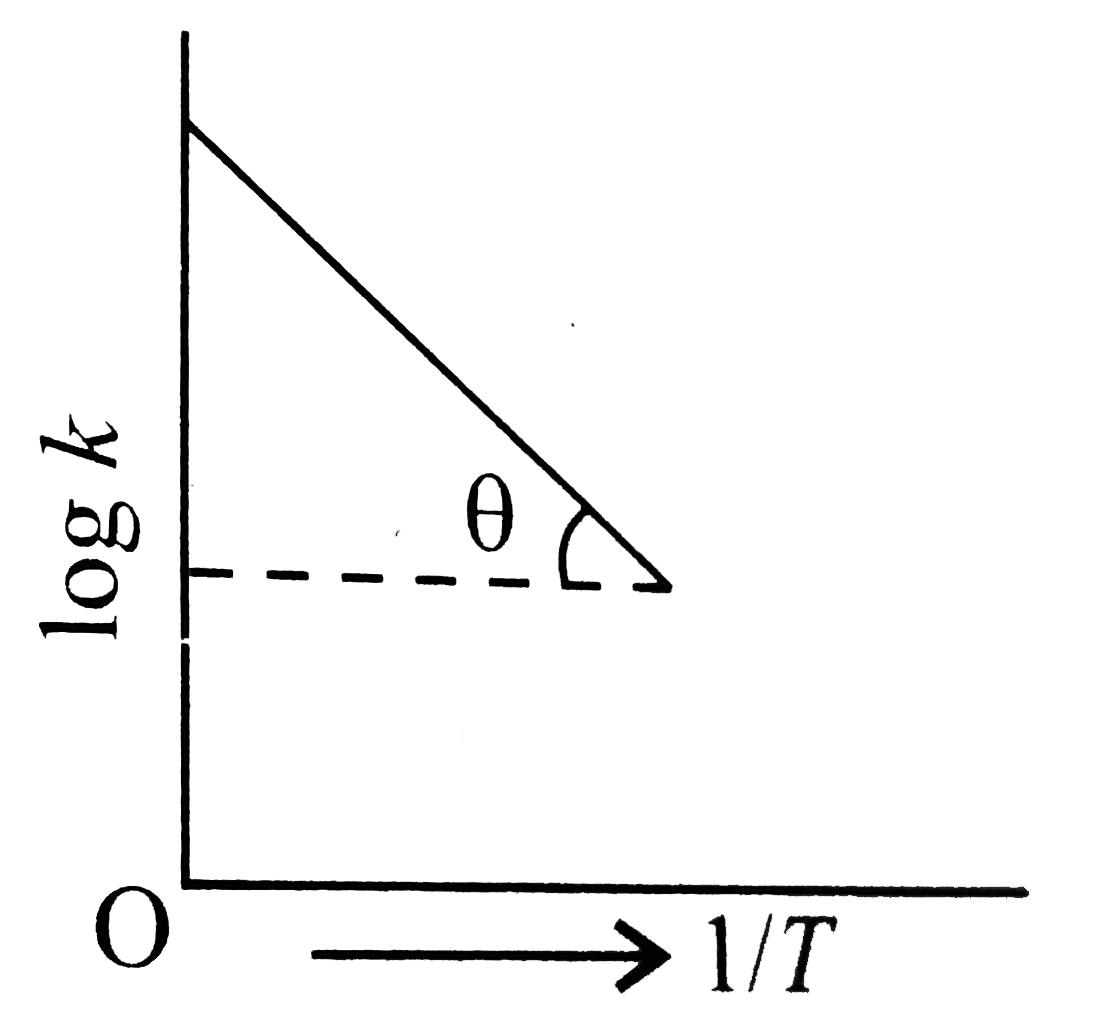Graph between log k and 1T (k is rate constant in s−1 and T is the temperature in K) is a straight line. As shown in figure if OX = 5 and slope of the line =−12.303then Ea is :

Video Solution
Text Solution
log10k=log10A−Ea2.303RT Slope =−Ea2.303R=−12.303 ∴Ea=R=2 cal
|
Similar Questions
Knowledge Check
Graph between log k and 1/T [where K is rate constant in s−1 and T is the temperature (in K) is a straight line with Hence, Ea will be
 A2.303×2 calB22.303calC2 calDNone of these
A2.303×2 calB22.303calC2 calDNone of theseGraph between logk and 1/T [k rate constant (s−1) and T and the temperature (K)] is a straight line with OX=5,θ=tan−1(1/2.303). Hence −Ea will be
 A2.303×2 calB2/2.303 calC2 calDnone
A2.303×2 calB2/2.303 calC2 calDnoneGraph between logk and 1/T [k rate constant (s−1) and T and the temperature (K)] is a straight line with OX=5,θ=tan−1(1/2.303). Hence −Ea will be
 A2.303×2calB2/2.303calC2calDNone
A2.303×2calB2/2.303calC2calDNone
A graph plotted between log k vs 1T is represented by
View SolutionThe graph between the log K versus 1T is a straight line. The slope of the line is
View SolutionIf we plot a graph between log K and 1T by Arrhenius equation , the slope is
View SolutionIf a graph is plotted between ln k and 1/T for the first order reaction, the slope of the straight line so obtained is given by
View SolutionFor a first order reaction, the plot of log k against 1/T is a straight line. The slope of the line is equal to
View Solution

